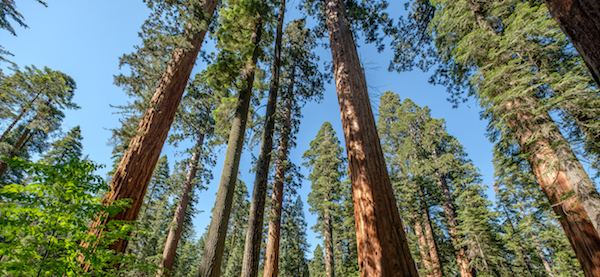The Hidden Life of Trees – A Book Review

I am energized by the outdoors, nature and specifically trees. I need to live near them, and I am fortunate enough to have an enormous, 130-year-old white oak right outside my office window while I write this book review. It sprawls across the road, reaching for our neighbor’s sunlight, while remaining heavily rooted 100 feet or more from its farthest reaches!
Possibly my favorite book I’ve read this year, “The Hidden life of Trees,” was chosen because I’d heard that the author, Peter Wohlleben, uncovers some ground-breaking contemporary research about the social nature of trees. The social nature of trees … let that sink in for a moment.
Wohlleben shares his deep love of the German Old Growth forests he has had the honor of managing for over 30 years. He explains the process of life and death, communication and synergies of trees and the many other species and organisms that co-exist in the forests. He focuses mostly on tree species that are in European and American forests – oak, beech, firs -deciduous and coniferous trees alike. He includes Information and stories from other collaborative researchers on forests all over the world, making the book inclusive and global.
What that research uncovered is that an entire hidden world of communication – teamwork, interdependence, competition for resources, danger alerts – exists in our forests of which many of us are unaware.
There are wonderful analogies and lessons to be learned from these hidden activities and lives being lived in our forests, analogies that apply to teams and organizations as well as individuals.
For example, according to researchers, trees “talk” to one another as a team to plan critical work and activities on a regular basis. The communication in human terms is very slow and unspoken; however, their timing and methods aside, a forest would perish without this ability to communicate.
“A tree’s most important means of staying connected to other trees is a “wood wide web” of soil fungi that connects vegetation in an intimate network that allows the sharing of an enormous amount of information and goods.”
We learn that all trees communicate to collectively decide on when to bloom, when to bear fruit or nuts, when to shed leaves. They communicate both within their species and, for some purposes, outside their species as well. Trees rely on communicating through scent if there are threats such as invasive insects, allowing them to emit toxins through their leaves or bark for defense.
We also learn through Wohlleben that a nutrient exchange occurring in the root systems between the trees and these micro-organisms is so critical to the health and sustainability of the forest that the roots of 500-year-old “dead” trees are kept alive, well underground as critical links in the system.
I am reminded that for humans in any type of relationship – including people in teams in any organization, communication is essential to meet that organization’s objectives and goals. Wohlleben reveals that trees never miss their colleagues’ signals yet as rich as the human capacity is for language and communication, how often do we miss one another’s messages?
Also similar to humans, we learn that trees are constantly battling for resources (albeit at a very slow pace relative to human observations and expectations). A single tree does not survive without attempting to put its colleagues “in the dark.” Quite literally, trees are competing for sunlight, and in that endeavor, they are constantly reaching for the sky and spreading as wide as possible … often at their neighbor’s expense.
Trees rely on interdependence as much as competition, but to date have shown no capacity for empathy and compassion. Fortunately, as humans, we have the opportunity to compete and improve while bringing others with us. How does interdependence show up in your organizations and teams?
The last tree lesson I will bring to this review is that of diversity and inclusion. Forests are some of the most bio-diverse ecosystems on our planet, relying on a vast array of species and organisms to survive and thrive:
“There are more life forms in a handful of forest soil than there are people on the planet. A mere teaspoonful contains many miles of fungal filaments. All these work the soil, transform it, and make it so valuable for the trees.”
Organizations of all types benefit from diversity and inclusion. As leaders, we know that diverse teams and resources give us a competitive business edge, yet compared to the forests, our organizations – especially the leadership – tends to remain less diverse. Does your organization value diversity? What does your leadership team look like from a diversity perspective? How are you including others in leadership and growth opportunities?
I cannot recommend this book enough and for those of you who have met with me in person over the past 9 months, you know I have likely recommended this book to you in person!
Please let me know what you think about the book after you’ve read it. Share your favorite lesson with me … won’t you please?

I was glued to the little bit written, haven’t desired to read anything in years.
Would love to read the book